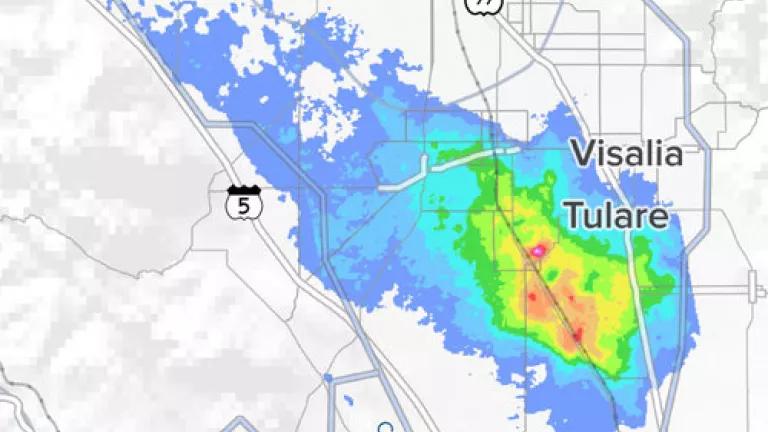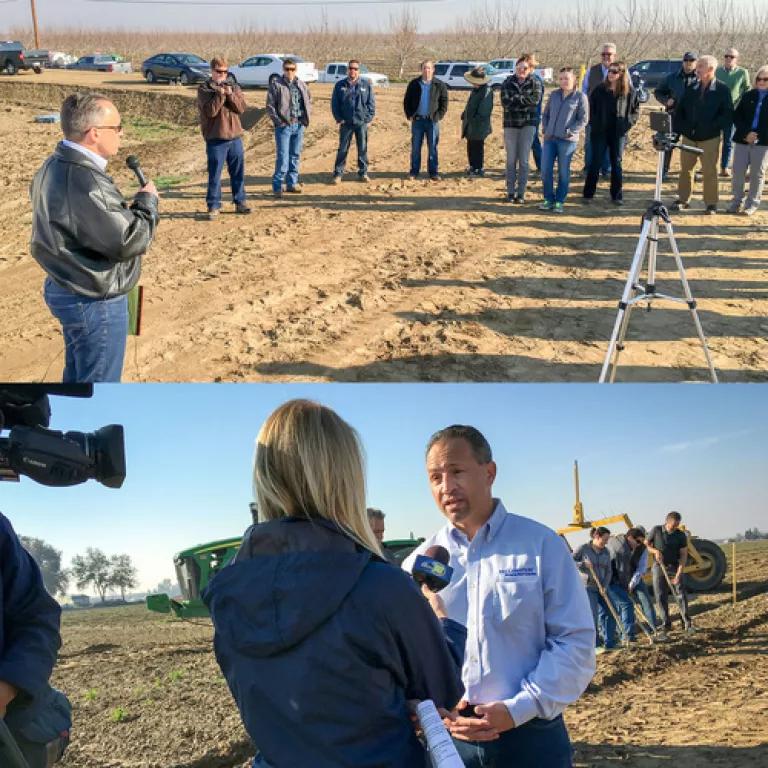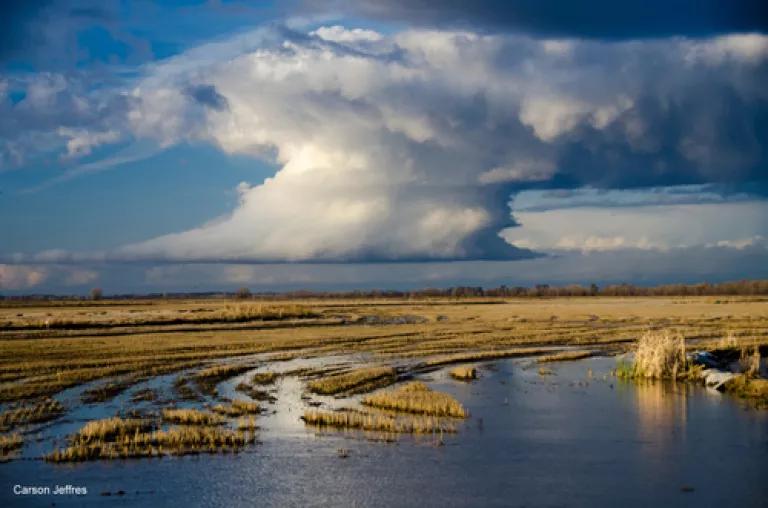Digging out of the subsided hole we're in: Restore the San Joaquin River and its floodplains to recharge groundwater basins and stop subsidence.

Over the past month, there has been a flurry of articles about the land subsidence crisis unfolding in the San Joaquin Valley. Driven by excessive groundwater pumping, the earth's surface is collapsing and has already caused what the USGS calls one of the "single largest alterations of the land surface attributed to humankind." Subsidence was a major problem in the middle of the last century that was thought to have been solved by construction of dams and the diversion of rivers for agricultural water supplies. But land subsidence is back now with a vengeance. Recent legislation will help rein in groundwater extraction, but little attention is being put on how we can replenish our underground reservoirs.
The earth is falling. That is the title of a recent blog from UC Davis' Watershed Center about this issue. Land subsidence is caused when groundwater pumping leaves creates empty spaces below ground and the weight of the land above causes the soil to collapse - permanently. Four years of drought, federal water management programs, and increasing demand for water to grow new plantings of high-value, permanent crops has fueled a dramatic increase in excessive groundwater pumping. As a result, the earth's surface is dropping at rates of up to more than a foot a year with no end in sight.
Areas affected by subsidence in the San Joaquin Valley. Image courtesy of Tom Farr, NASA Jet Propulsion Laboratory
The impacts will be measured in the billions. Roads, bridges, gas pipelines, flood control levees, water supply canals, and railroads are some of the public infrastructure affected by the collapsing surface. The costly impacts are widespread across much of the Southern San Joaquin Valley. Repairing the damage to public and private infrastructure will be daunting and impeded by the challenge of continued subsidence. Meanwhile, subsidence threatens the services that infrastructure provides: levees for flood protection; roads, bridges and railways for transportation; and canals for delivery of water supply. Furthermore, groundwater overdraft is threatening safe drinking water supplies for rural communities.
The solution: Outflow equals inflow. In the simplest terms, solving the subsidence crisis will require sustainable levels of groundwater pumping that do not exceed the rate at which we can recharge the system.
- Implement the Sustainable Groundwater Management Act. The SGMA is a critical first step that came in the fall of 2014 when California passed legislation to regulate groundwater. While SGMA has the potential to curb out-of-control groundwater extraction, local agencies have decades to fully implement groundwater management plans that are supposed to achieve sustainability. Meanwhile, groundwater pumping is expected to continue at rates that perpetuate further subsidence. Furthermore, SGMA does not address the actions we can take now to recharge our shallow groundwater aquifers, provide water supplies and slow the rate of continued subsidence.
- Restore flows to the San Joaquin River. Thanks to a 2006 Settlement Agreement between farmers, the federal government and a coalition of fishing and environmental groups, led by NRDC, flows and salmon runs are being restored to more than 150 miles of California's second largest river. Starting in the 1950s, the illegal dewatering of more than 60 miles of river reduced natural infiltration of water. Since 2009, renewed flows have already provided more than 300,000 acre-feet of groundwater recharge.
- Build groundwater recharge projects. In the San Joaquin Valley, groundwater "banks" are a critical tool for managing the region's limited water supplies. These are highly managed groundwater areas where surplus water is stored in the ground for later use. In December of 2015, the San Joaquin River Restoration Program began construction of a groundwater bank. This project, in addition to three others currently in development, will improve water management in an area heavily affected by subsidence. Groundwater management projects are an increasingly valuable tool for improving water supplies to the region because they can be constructed in a fraction of the time and cost of new surface storage.

Ground-breaking ceremony for the Tulare Irrigation District and San Joaquin River Restoration Program groundwater recharge project. Photo courtesy of the United States Bureau of Reclamation.
- Reconnect rivers and floodplains. The Central Valley Flood Management Plan is being implemented to improve flood protection for farms and cities, while also improving water management and habitat for wildlife. Historically, floodplain lands adjacent to the San Joaquin River helped recharge the region's aquifers when inundated with high spring flows. However, the construction of dams and levees in the 1900s reduced flows and constrained the river to a narrow ribbon, virtually eliminating floodplain recharge of groundwater. The CVFMP presents a tremendous opportunity to reconnect the river with its floodplains and promote groundwater recharge. By setting back levees and using floodplains to store and convey flood flows, the natural floodplain function of groundwater recharge can be restored. Additional conveyance and floodplain storage will also enable re-operation of flood control reservoirs and improve water supplies.

Yolo Flood Bypass. Photo courtesy of Carson Jeffres.
An integrated approach to groundwater management is essential to effectively address the subsidence crisis in the San Joaquin Valley. Researchers from the University of California acknowledged this need earlier this year when they announced the creation of the Water Security and Sustainability Research Initiative. The focus of the effort will be to identify the potential for coordinating various water resource management activities, such as considering floodplain management in the operation of reservoirs in order to advance groundwater recharge. Integrating restoration of the San Joaquin River and its floodplain into groundwater management improvement efforts is an opportunity that could save taxpayers billions of dollars and improve public health and safety.
